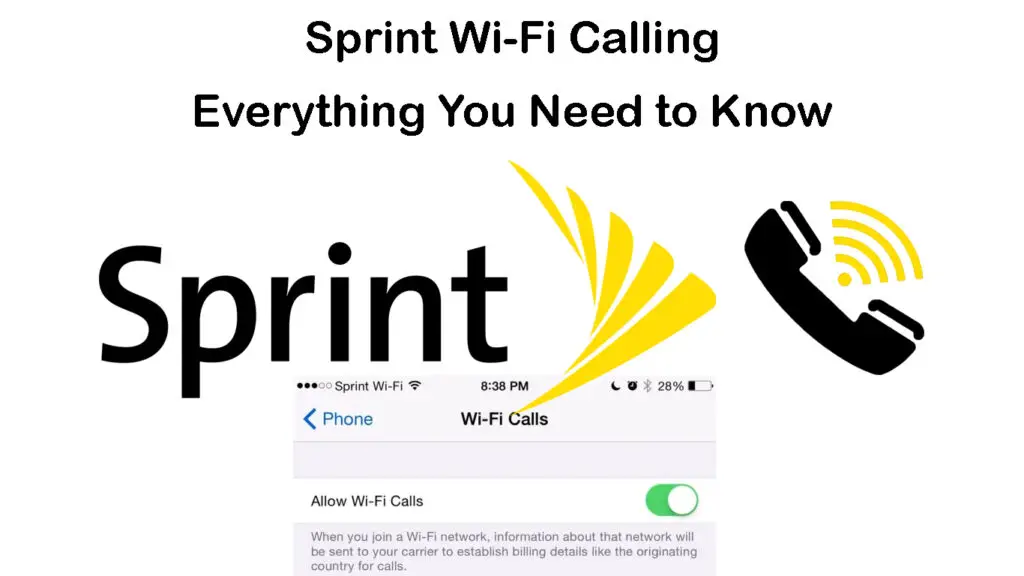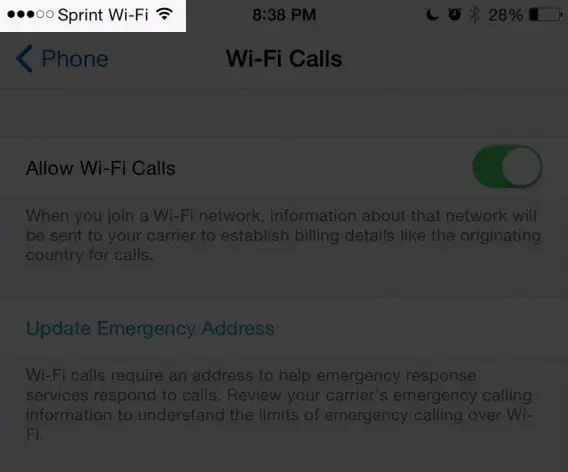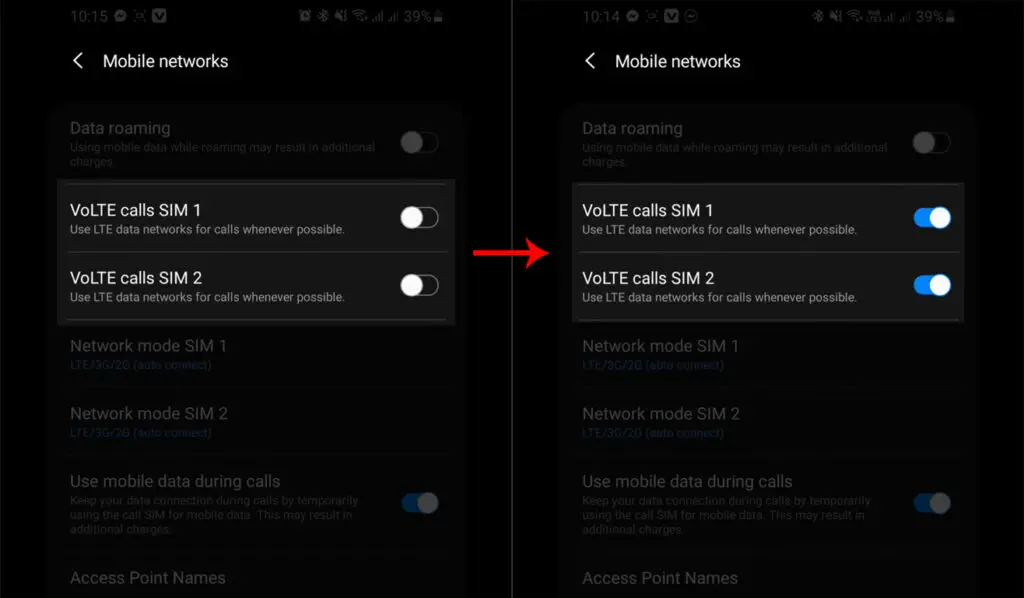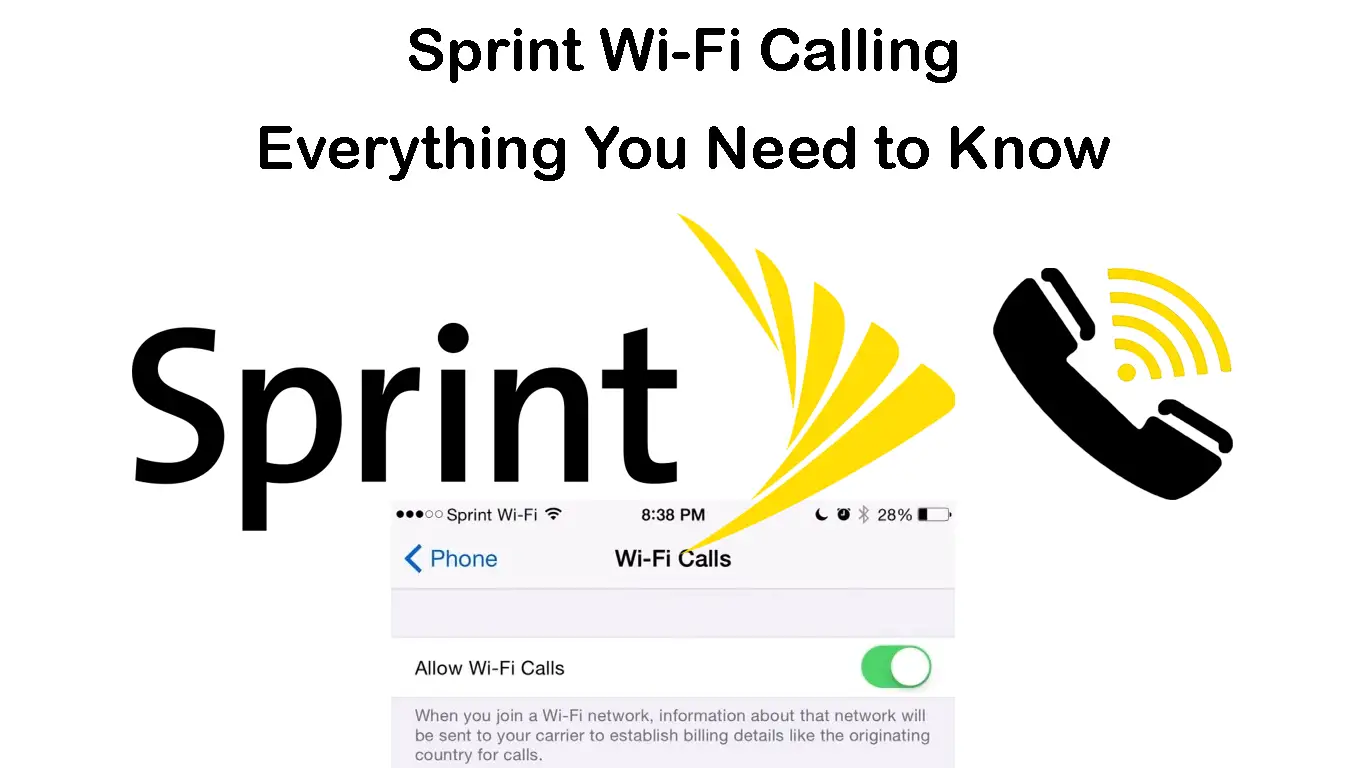Sprint Mobile was renowned as one of the leading telephony providers in the United States. The company has since merged with T-Mobile in 2020 to become one of the most extensive cellular networks, with over 50 million subscribers in the country.
Sprint Wi-Fi calling is one of the most attractive offerings that has made the merged company more popular in the telco industry. This feature has been around for a while, but many customers are yet to make the most of it.
So, in this post, we will explain what Sprint Wi-Fi calling is all about and everything you need to know to make the most of this feature.

CONTENTS
What is Sprint Wi-Fi Calling?
Sprint Wi-Fi calling is a voice service by Sprint/T-Mobile that allows customers to place and receive calls over a Wi-Fi connection rather than a cellular network. You can also send and receive text or multimedia messages and place video calls over your wireless network.
The service is available on selected Android and iOS devices and does not require a separate application or login credentials. It is also important to note that Sprint Wi-Fi calling is available at no additional cost for calls made within the U.S. (including Puerto Rico and Virgin Islands). International rates apply to calls made outside the specified territories.
Wi-Fi Calling Explained
How Does Sprint Wi-Fi Calling Work?
Sprint Wi-Fi Calling works like any other Voice over IP application (e.g. WhatsApp or Skype). The feature allows you to make and receive calls over your Wi-Fi connection rather than your cellular network.
When enabled, Wi-Fi calling switches your phone to use your Wi-Fi network to place and receive calls in areas with weak or no cellular connection. It transmits cellular data packets through a Wi-Fi connection across the internet to the receiving device and vice versa.
Interestingly, all voice calls and text messages will appear ordinary, and the recipient won’t realize you are using the Wi-Fi calling feature. However, a Wi-Fi icon may appear on some phones and tablets.

To ensure you stay connected, your phone will also switch to your cellular LTE network automatically if you move outside your Wi-Fi coverage. However, the VoLTE toggle must be active for in-call handover to work.
Here are the steps to activate VoLTE on your phone:
- Go to Settings.
- Tap Connections or Network & Internet.
- Tap Voice Networks or Mobile Networks.
- Toggle VoLTE to enable in-call handover.

Since Sprint Wi-Fi calling is only available on selected devices, your smartphone must support this feature for it to work. Some carriers require your phone to have HD voice settings enabled, but this is not the case with Sprint/T-Mobile.
How to Activate Sprint Wi-Fi Calling?
If your phone or tablet supports Wi-Fi calling, activating the feature should not be an issue. You only need to find the Wi-Fi calling option on your device and tap it to activate it.
Here are the steps:
Android Devices
- Tap the gear icon to go to Settings.
- Tap Connections or Network & Internet.
- Tap Voice or Mobile Networks.
- Tap Wi-Fi Calling.
- Enter your Emergency Contact (E911 Address).
- Tap Wi-Fi preferred (this will make Wi-Fi calling your default call method when a cellular signal is unavailable).
How to Enable Wi-Fi Calling on an Android Phone (Samsung Galaxy Phones)
iOS Devices
- Go to the Settings app.
- Tap Phone.
- Tap Wi-Fi Calling.
- Toggle the slider to turn Wi-Fi calling on.
- Enter your Emergency Contact (E911).
Note: You must provide a valid primary street address when enabling Sprint Wi-Fi calling for the first time lest you won’t access the service.
Enable Wi-Fi Calling on iPhone
How to Update Your E911 Address
You can update your E911 or emergency contact address on your device or via your sprint.com account.
Here are the steps to update your E911 Address on Sprint.com
- Go to Sprint website.
- Enter your username and password to log in to your account.
- Click your device on the dashboard.
- Select Manage Device.
- Click Options.
- Click Update E911 Address.
- Enter your Address details.
- Then click Save.
Advantages of Sprint Wi-Fi Calling
- Improves Voice Quality – Sprint Wi-Fi calling enhances the voice quality of your calls, particularly in areas with weak cellular connectivity. You can be sure of improved clarity when making calls in less congested Wi-Fi networks.
- Solves Network Problems – Sprint Wi-Fi calling addresses network issues by ensuring you stay connected even in remote areas with poor cellular signals but adequate Wi-Fi coverage. You can make calls without worrying about unnecessary interruptions so long as you have a stable Wi-Fi connection.
- No Additional Charges – Sprint Wi-Fi Calling does not charge extra bucks outside your usual monthly voice plan. You can make and receive calls in the U.S. and its territories without incurring additional costs.
- Uses Existing Phone Number – You do not need to purchase a new phone number to use Sprint Wi-Fi calling. Your current phone number will work fine, with no new registrations or logins required.
- No Separate Application Required – Wi-Fi calling is a built-in feature in the latest Android and iOS devices. You only need to activate Sprint Wi-Fi Calling on your device to enjoy free calls and text messages in selected countries.
- Supports Texts and Video Calls – Even though Sprint Wi-Fi Calling is predominantly used for making and receiving voice calls, you can use the service to send text messages and make video calls. The service also supports multimedia messages, including pictures.
Disadvantages of Sprint Wi-Fi Calling
- Available on Selected Devices – Sprint Wi-Fi Calling is only available on selected devices. Besides, only a few devices support in-call handover, meaning you might experience connectivity issues if you are outside your Wi-Fi coverage.
- Requires a Wi-Fi Connection – Sprint Wi-Fi Calling requires a stable and reliable Wi-Fi network to work appropriately. The service cannot work if you do not have an active internet connection or when outside your Wi-Fi coverage.
- Might Drain Battery – When roaming from one Wi-Fi hotspot to the next, your phone’s battery might drain as the device scans for nearby networks. Switching from Wi-Fi to cellular networks might also usurp your battery, particularly during in-call handover.
- International Charges – Even though Sprint Wi-Fi calling is available in over 200 countries, international rates apply for international calls. You can only make free calls in the U.S. (including Virgin Islands and Puerto Rico).
Frequently Asked Questions
Question: Is Sprint Wi-Fi calling free?
Answer: Sprint Wi-Fi Calling is a free service so long as you have an active voice plan. It does not count against your cellular minute plan. However, even though Sprint Wi-Fi Calling is available worldwide (in more than 200 countries), you can only use this feature when calling U.S. numbers (including Virgin Islands and Puerto Rico). International calling rates apply to international phone numbers.
Question: How do I set up Sprint Wi-Fi calling?
Answer: Before setting up Sprint Wi-Fi calling, you must ensure your device supports this service. Wi-Fi calling is available on most of today’s Android phones and iPhone 5c or newer. Next, tap Wi-Fi calling to enable the service on Sprint cellular network. You can also search Settings for Wi-Fi Calling and activate the feature.
Question: Does Wi-Fi Calling include text messages?
Answer: Even though it’s called Wi-Fi Calling, the service includes sending text messages over a Wi-Fi network. Aside from voice calls, you can send pictures, group texts, and multimedia content. You can also place video calls to your friends and family over an internet connection. However, MMS services are only available in Wi-Fi calling mode on selected devices.
Question: Should Wi-Fi calling be turned on all the time?
Answer: Leaving Wi-Fi calling on all the time improves your phone’s network coverage. It allows your device to use available Wi-Fi and cellular networks interchangeably, ensuring you stay online wherever your travels take you. Wi-Fi calling allows you to call and send text messages in remote locations with weak cellular coverage.
Question: Is Sprint Wi-Fi calling risky?
Answer: Wi-Fi calling is 100% safe. This technology uses advanced encryption to ensure your voice and text data is secure during transmission over wireless networks. Your cellular provider will encrypt your data even when using a Wi-Fi connection, making Wi-Fi calling safe. Besides, most Wi-Fi networks are password-protected, making them even more secure.
Take Away
Sprint Wi-Fi Calling ensures you stay connected even when you are in a remote area with weak or no cellular connectivity. You can place and receive calls, send text messages, and make video calls wherever your travels take you at no additional cost outside your monthly voice plan. The only slight issue is that Sprint Wi-Fi calling requires a stable Wi-Fi connection to make the most of this service.

Hey, I’m Jeremy Clifford. I hold a bachelor’s degree in information systems, and I’m a certified network specialist. I worked for several internet providers in LA, San Francisco, Sacramento, and Seattle over the past 21 years.
I worked as a customer service operator, field technician, network engineer, and network specialist. During my career in networking, I’ve come across numerous modems, gateways, routers, and other networking hardware. I’ve installed network equipment, fixed it, designed and administrated networks, etc.
Networking is my passion, and I’m eager to share everything I know with you. On this website, you can read my modem and router reviews, as well as various how-to guides designed to help you solve your network problems. I want to liberate you from the fear that most users feel when they have to deal with modem and router settings.
My favorite free-time activities are gaming, movie-watching, and cooking. I also enjoy fishing, although I’m not good at it. What I’m good at is annoying David when we are fishing together. Apparently, you’re not supposed to talk or laugh while fishing – it scares the fishes.

